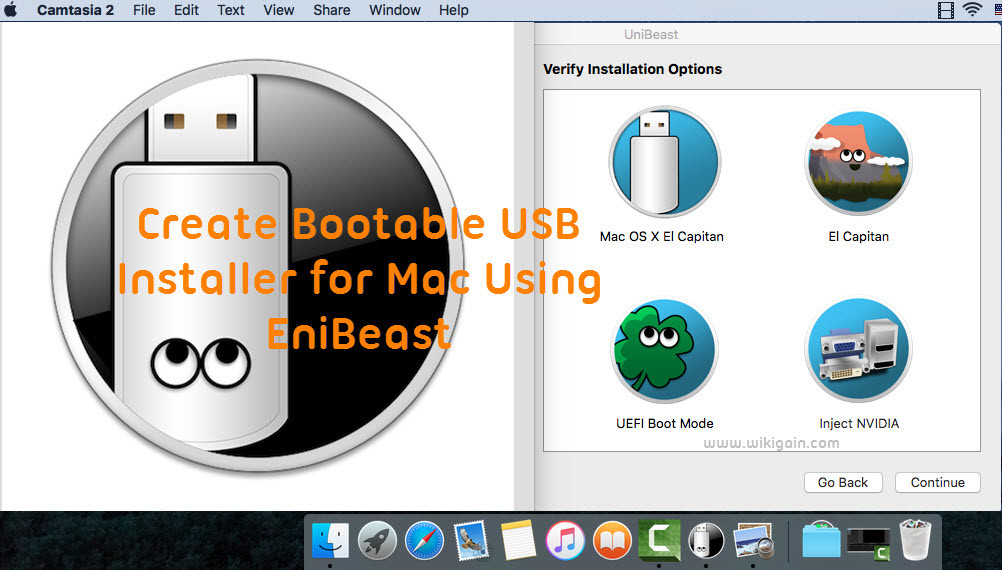Boot Mac Using Usb
Method 3: Use Boot Camp Assistant on Mac. If you wish to know how to make a bootable USB Windows 10 on Mac using Boot Camp Assistant, read on. You will need to have a USB drive with a storage capacity of 16 GB or more for this method to work. You can use the following steps to know how to make a Windows 10 bootable USB on Mac using Bootcamp. But the hfs file of Mac os high serria 10.13.6 given above is corrupt or damaged after successful boot the mac installer says “mac can’t be installed by this due damaged or missing file.” So don’t download it.
What's New in MemTest86 for the UEFI platform (Version 5 and later)?
MemTest86 supports booting from the newer UEFI platform. When booting from UEFI, MemTest86 has access to additional services not available in BIOS including:
Boot Mac From Usb Linux

- Native 64-bit support
- Addition of 2 new memory tests to take advantage of 64bit data and SIMD instructions.
- Speed improvements of between 10% and 30%+. Especially for tests, #5, #8 & #9. This is the result more moving to native 64bit code, removing the PAE paging hack, switching compilers and using faster random number generation algorithms.
- No longer requires the use of the PAE workaround to access more than 4GB of memory. (PAE = Physical Address Extension)
- Improved multi-threading support, where supported by the underlying UEFI system.
- Option to disable CPU caching for all tests
- Graphical interface with mouse input, where supported by the underlying UEFI system. On older systems a keyboard is still required.
- Improved USB keyboard support. The keyboard now works on systems that fail to emulate IO Port 64/60 correctly. So Mac USB keyboards are now supported.
- Reporting of detailed RAM SPD information. Timings, clock speeds, vendor names and much more.
- Support for DDR4 RAM (and associated hardware), including retrieval and reporting of DDR4-specific SPD details. This includes DDR4 RAM that support Intel XMP 2.0 DDR4 RAM timings
- ECC RAM support (limited hardware support, ongoing development)
- Detection of ECC support in both the RAM and memory controller
- Polling for ECC errors
- Injection of ECC errors for test purposes. (limited hardware only)
- Support for logging and report generation. In all prior MemTest86 releases, there was no disk or network support.
- Support for network PXE boot for scalable, diskless deployment to multiple targets
- Having a configuration file to allow settings to be pre-defined without the need for keyboard input. This can help with automation.
- Secure Boot signed by Microsoft for ensuring software integrity
- See the What's New page for a complete list of changes.
Boot Mac Using Usb Drive


See the feature comparison page for a summary of the differences between the various editions of MemTest86.
MemTest86 can boot from a USB flash drive or, with Linux systems, by the boot loader (for example, LILO or Grub). Any Windows, Linux or Mac system may be used to create the USB flash drive. Once a MemTest86 boot disk has been created, it may be used on any x86 (PC/Mac) or ARM computer.
MemTest86 (Site Edition) supports network (PXE) boot for scalable deployment to multiple client machines in the LAN network. In this configuration, no disks are required; only a PXE Server and PXE boot enabled clients are required to support network boot.

